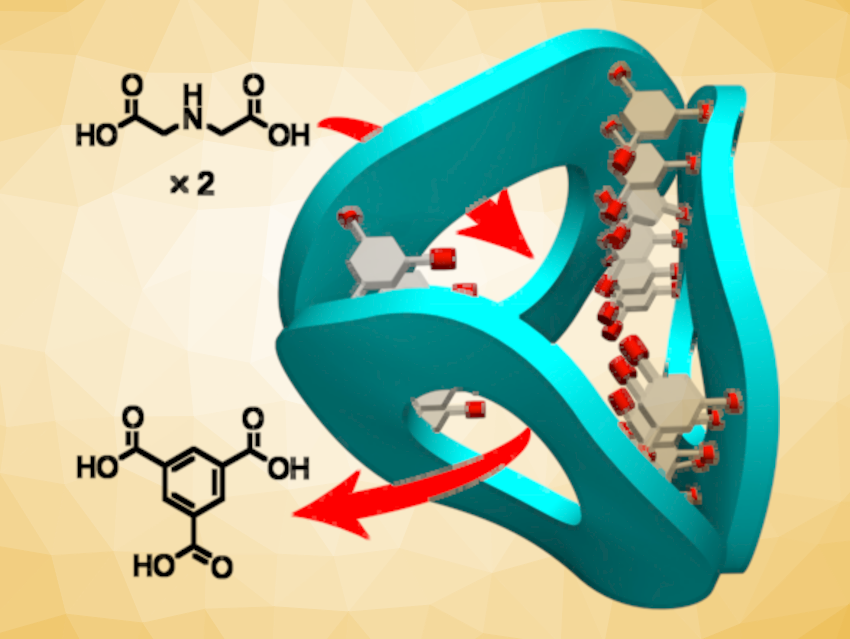Imagine that researchers want to turn a fullerene into a flat graphene sheet. Hypothetically, one could functionalize the interior of the buckyball with many π-conjugated aromatic groups, then π–π interactions between them will act as a template and lead to a flattened sheet. This approach is a fiction in the fullerene world, but has become a reality for an inorganic polyoxometalate system. Polyoxomolybdates, for example, can assemble into very large and complex molecular architecture, such as wheels and spheres built from domed {Mo(Mo5)} building blocks.
Xikui Fang, Harbin Institute of Technology, China, and colleagues have used this approach in giant polyoxomolybdate chemistry. They used aromatic carboxylates, such as 1,3,5-benzenetricarboxylate, as templates for polyoxometalate cages. The resulting inorganic shells incorporate arrays of 18 stacked aromatic units with strong π–π interactions (pictured in grey/red). This directs the formation of trigonal prismatic {Mo126W30} cages with “flattened” metal-oxide panels (pictured in cyan). This is a marked departure from the “traditional” wheels and spheres.
NMR spectroscopy results confirm that the cages are stable in solution. They can undergo postsynthetic substitution of the inner aromatic carboxylates with selected aliphatic carboxylates, e.g. iminodiacetate (pictured top left). This π-interaction approach provides an unconventional tool for “flattening” otherwise domed structures. The fact that the aromatic templating molecules in the cages can be substituted paves the way for endo-functionalization.
- {Mo126W30}: Polyoxometalate Cages Shaped by π–π Interactions,
Minghui Zhu, Shicheng Han, Junrui Liu, Mengjin Tan, Wei Wang, Kosuke Suzuki, Panchao Yin, Debin Xia, Xikui Fang,
Angew. Chem. Int. Ed. 2022.
https://doi.org/10.1002/anie.202213910


